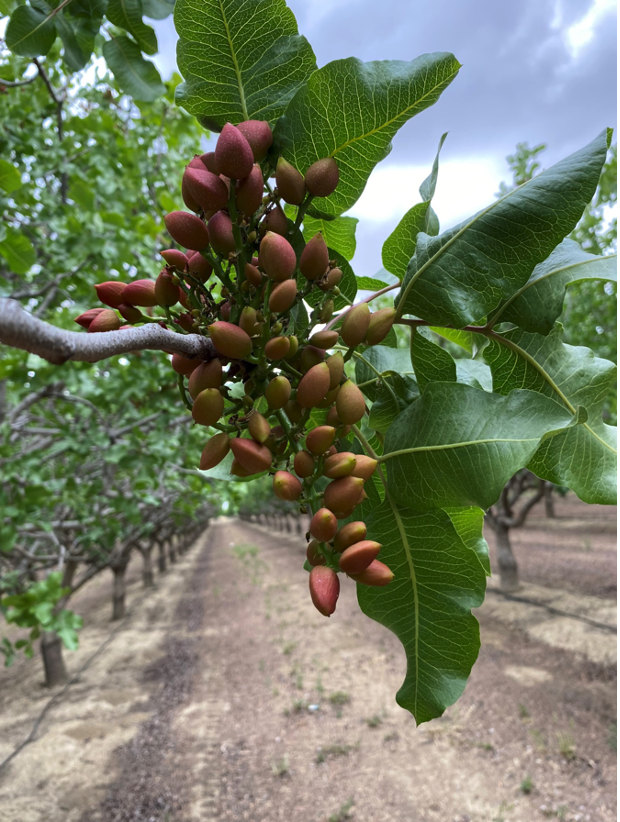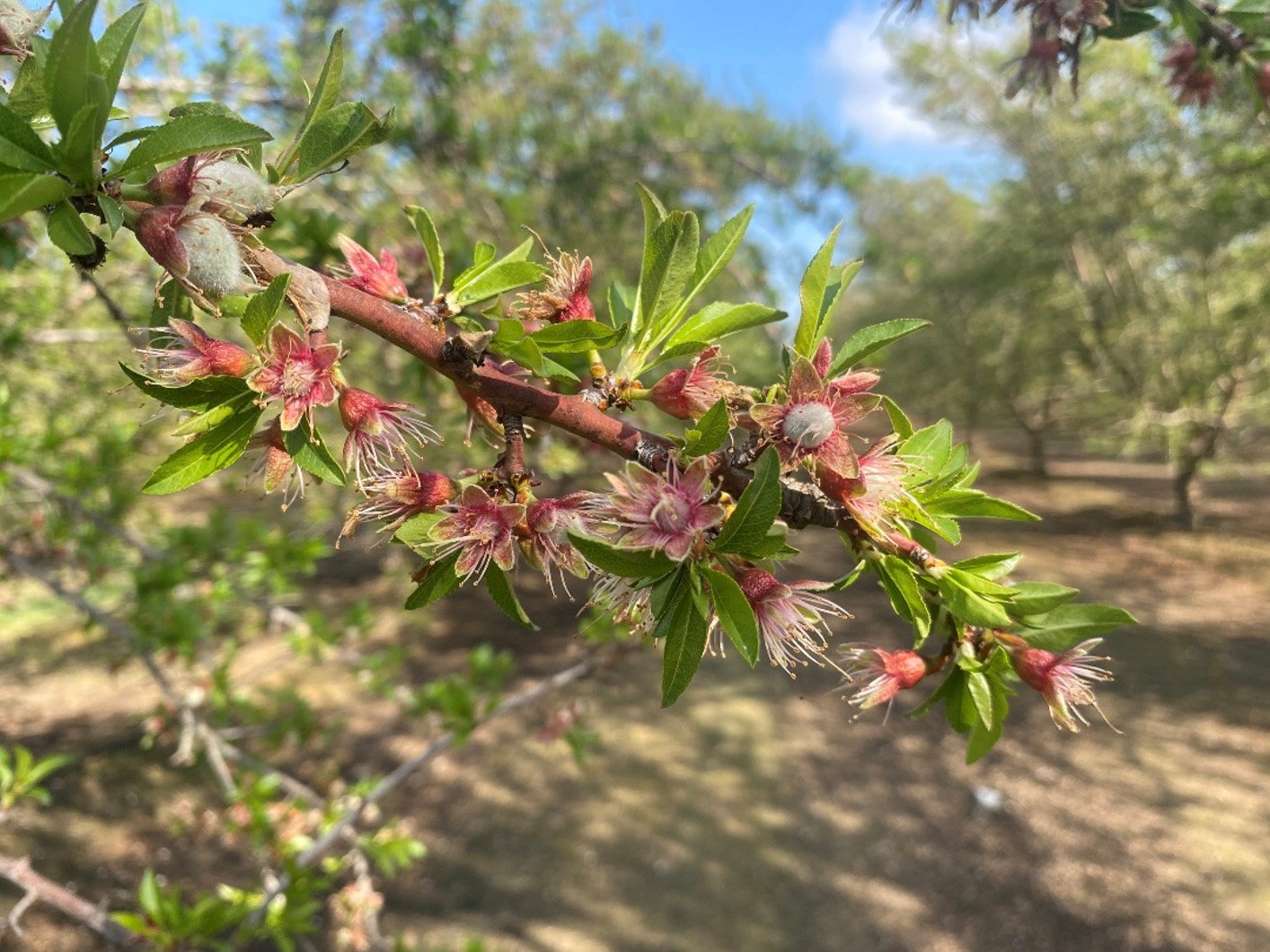New plantings can be tricky especially in a year where water quality and quantity are low. Ensuring that your trees are well taken care off can become a balancing act while combating hot weather, mitigating various salts and providing the correct amount of water for transpiration. As stewards of the land, we are very aware that every drop of water counts. Precision irrigation will protect your crops.
The fundamentals of precision irrigation revolve around mitigating plant stress by optimizing water and oxygen within a crop’s root zone. Transpiration and nutritional uptake are at their peak when neither water nor oxygen are limited. These fundamentals apply to young orchards even more so because of lower stress thresholds when it comes to reduced root respiration and high soil tension deficits.
To better explain the importance of root respiration, I often refer to flood irrigated corn. When observing a stand of corn, we generally see shorter stalks and lower grain counts in areas where water accumulates post-irrigation: at field lows as well as at the ends of rows. Each plant shares the same genetics but the plants that receive more water than the rest fall behind because of hypoxic soils. A higher percentage of time in well-balanced soils where root respiration is not limited leads to taller stalks.

When walking young orchards, 99.9% of the time a tree or area of trees will fall behind because of low root respiration, just like in our corn example. Matching irrigation to the field’s transpiration rate is the top priority as the last thing we want to do is neglect the root zone of oxygen. On June 15th, I was able to observe a pistachio orchard before the next scheduled irrigation. During this visit the pistachios were still wet to three feet from the 3.5 gallons of water applied on June 9th.

Despite minimal amounts of water applied weekly, the irrigations were contributing to the problem of hypoxic soils and low root respiration. This low rate of consumption also resulted in minimal vegetative growth when compared to the stronger sections of the new planting.
When oxygen and water are optimum, we see much higher rates of transpiration in the first leaf trees. Irrigations are regulated to meet the exact needs of the field, and excess irrigations are limited to mitigate accumulation of unneeded salts. In the example below, shorter applications of water were required to replenish the soil moisture deficit accrued over a week. By day six this field was beginning to dry at 12”.


Irrigation water availability has played a huge role in budgeting how much water can be applied this year. Managing fields based on an evapotranspiration budget can lead to over- or under-irrigation as seen above. If we were to treat the low activity field the same as the high productivity field, we would see excessive water applied leading to the accumulation of unneeded salts and higher tree mortality. Allocating water to areas where it is needed will significantly benefit struggling and progressing trees by mitigating waste.
This year is also the year that a little extra water will not help young orchards. Marginal water quality has already led to the accumulation of various metals and salts. Water quality in some areas has already dropped to levels where sodium levels have reached 1,500 ppm. For every inch of water applied to these fields, we will see 337 pounds of sodium. For a quick reference, when looking at your water analysis, 1 ppm equals 2.7 lbs. of material per 1 acre-foot of water applied. With an analysis of 1,500 ppm sodium, these fields will accrue 2.04 tons of sodium per acre-foot of water pumped.
2021 New Planting Goals
- Analyze your water. *Check PPM of solutes
- Budget water based on plant water uptake versus ET estimate.
- Reduce excessive applications.
- Improve root respiration.
- Keep salts in solution by mitigating high soil tension deficits.
About the Author

Irrigation Management Advisor Travis Goldman was born and raised in Watsonville and currently provides irrigation scheduling services to growers in California’s Central Valley. He graduated from UC Davis and has worked throughout California as a service technician, grower support specialist and irrigation management advisor to learn and understand every aspect of Hortau’s irrigation management platform.







